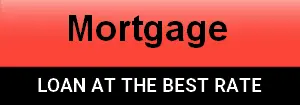Mortgage amortisation: explanations and calculations

- What is mortgage amortisation?
- Minimum amortisation: what are you actually required to do?
- Direct amortisation: how it works, advantages and limitations
- Indirect amortisation: how it works, advantages and limitations
- How to calculate your mortgage amortisation?
- Direct or indirect amortisation: which strategy should you choose?
Amortisation determines far more than the repayment pace. It actually shapes your interest burden, your tax position and the overall balance of your financing. As such, choosing between direct amortisation, indirect amortisation (via pillar 3a) or maintaining a certain level of debt directly affects your taxes and your financial leeway.
In this article, we clarify each option, highlighting their advantages and limitations, to help you build truly optimal amortisation.
What is mortgage amortisation?
Amortisation is the part of your repayment that reduces the borrowed principal, which means—unlike interest—that it reduces your debt over time, thereby improving your financial position.
Amortisation therefore plays an important role in managing your wealth. By acting on your annual charges and on your ability to cope with a rise in rates, it structures your wealth and your tax position.
Minimum amortisation: what are you actually required to do?
Minimum amortisation is the portion of your debt that the bank requires you to repay in order to keep leverage sustainable. This obligation applies only to the portion of second rank, usually to be amortised within 15 years or before retirement, whichever comes first.
The first rank, on the other hand, is not subject to any amortisation requirement.
The aim is to limit your interest burden over the long term and preserve the balance of your financial situation. The amount to be repaid is then spread evenly over the defined period, which determines whether your amortisation payments are annual or quarterly.
Direct amortisation: how it works, advantages and limitations
Direct amortisation consists of repaying each year part of your mortgage principal, thereby reducing your debt and the interest with each payment.
However, this leads to a reduction in the tax deduction on interest, which—depending on your situation—can increase your taxes.
Direct amortisation is suitable for those who want to reduce their leverage ratio, secure their financial position or prepare for retirement with manageable debt. It certainly offers a clear and reassuring repayment framework, but it is also less flexible and can sometimes come with a less favourable tax impact than other strategies.

Indirect amortisation: how it works, advantages and limitations
With indirect amortisation, you do not repay your debt immediately, but pay these amounts into a pension solution (often pillar 3a) that you pledge to the bank.
Throughout this period, your debt does not change, but keeping the debt level intact allows you to retain larger tax deductions, since interest is calculated on a higher mortgage amount.
When the 3a funds become available (often at retirement), the accumulated capital is used to reduce the mortgage, in line with the plan agreed with the bank. You therefore repay in one lump sum thanks to the savings built up over the preceding years.
This system offers three main advantages:
- more advantageous tax treatment;
- more flexible cash flow;
- a stronger pension capital.
Mini-simulation (simple illustration)
For an annual amortisation of CHF 6,000:
| Strategy | Immediate effect | Potential benefits |
| Direct | Debt decreases by CHF 6,000 | Interest reduced, but lower tax deductions |
| Indirect | Debt remains unchanged | Deduction of the 3a contribution + maintaining interest deductions |
(This is a simple illustration of the mechanism, not a full calculation.)
How to calculate your mortgage amortisation?
Calculating your amortisation means defining the repayment pace required to reach the objective set by the contract. Once the amount to amortise is known, it is easier to plan an annual or quarterly schedule for the entire duration of the mortgage.
Worked example
Suppose you need to amortise CHF 120,000 over 15 years.
- Annual amortisation calculation: 120,000 ÷ 15 = CHF 8,000 per year.
- If amortisation is quarterly, simply divide again: 8,000 ÷ 4 = CHF 2,000 per quarter.
This amount serves as a baseline:
- with direct amortisation, it reduces your debt each year;
- with indirect amortisation, it is paid into a pledged pillar 3a.
Simulate your mortgage with our mortgage calculator and determine the different options available depending on your current or future financial situation.
What this calculation should help you anticipate
- Your actual annual burden (and how it evolves).
- The impact on your taxes depending on the chosen strategy.
- Your ability to absorb the payments without weakening your cash flow.
- The level of debt you will keep in the long term, particularly with retirement in mind.

Direct or indirect amortisation: which strategy should you choose?
Choosing between direct and indirect amortisation means choosing between reducing your debt immediately or optimising your tax position and finances over the long term. There is no one-size-fits-all solution: it all depends on your tax situation, your priorities and your plans.
Comparison table: Direct vs Indirect
| Criterion | Direct amortisation | Indirect amortisation (pillar 3a) |
| Debt evolution | Decreases each year | Remains constant until maturity |
| Borrowing interest | Decreases progressively | Remains higher (debt unchanged) |
| Tax advantage | Decreases over time | Maximised (interest + deductible 3a contributions) |
| Liquidity | Less available | More flexibility (excluding 3a contributions) |
| Retirement preparation | No direct impact | Building a pension capital |
| Clarity / Simplicity | Very simple | More technical, requires discipline |
| Ideal profile | Priority on reducing debt | Priority on tax and wealth optimisation |
When should you favour direct amortisation?
Direct repayment is often chosen by those who want to reduce their debt quickly and have a simpler financial situation. This repayment method also suits those approaching retirement who want to limit their debts, or those who prefer a repayment plan that is easy to follow.
In this case, the priority is financial stability rather than tax advantages.
When does indirect amortisation become relevant?
Using pillar 3a becomes interesting when taxes are high and the deductions are advantageous. This solution also suits those who want to keep their money available or who think long term, gradually building up a pension capital.
Finally, it appeals to those who accept keeping a stable debt if it helps better balance their financial situation.






